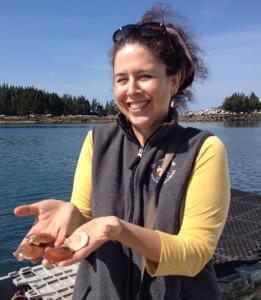How to Use a Story to Shift Someone From Hopeless to Hopeful; From Disempowered to “I can do this!”

Sport and life achievements and success concept. Rear view sporty girl raising arms towards beautiful glowing sunshine.
You’ve probably tried to coach someone who was stuck in a “There’s nothing I can do about it” frame of mind and no how difficult it is for a person in that state to hear your helpful suggestions or see opportunities to change.
This is where a story well told can be incredibly useful.
The right story can help someone shift their emotional state from one of feeling fearful or hopeless to curious and hopeful.
Because our state profoundly affects our performance knowing HOW to help someone shift into a more empowered, “I can do this” state is a hugely important skill to have.
Here’s an example of using a story to do that…
After I had finished a program at an organization, a young supervisor pulled me aside to ask for my advice.
She told me how she had inherited a team that included a very toxic long-term employee who had been allowed to treat people abusively. The new supervisor had tried once to address this and it had–surprise, surprise–no effect.
She said she knew she should have another conversation, but was dreading it.
She said she knew this person should be fired and that it will probably come down to this, and found the idea of having that conversation scary.
As she told me this, her whole posture communicated defeat and hopelessness. Her face looked anxious and beleaguered.
She Wants an Answer, But Isn’t Ready to Hear It
In my early years as a consultant I would have immediately answered her question about what she would do.
Now, I know that my first job was to help her shift her state because not only does our emotional state affect our performance, it profoundly affects our perspective. Just think of how differently you see challenges when you are tired or don’t feel well compared to when you are rested and feel well. When you feel poorly, they seem big and overwhelming. When you’re rested and feel well, they seem manageable.
So back to my young supervisor…
Let’s Shift That State First
So how can I shift her to an empowered, more hopeful state?
I shared one of my favorite stories told to me by my friend Fran, who’s a great coach and storyteller.
It was about a woman she inherited on her team who was extremely toxic. In fact, the owners of the company told her when she was hired that they wanted her to fire this lady (despite no one having the courage to do it in the past).
Fran had a couple of conversations with the woman when she acted out, trying to give her a chance, but to no avail.
It’s Time to Free Up Her Future
Fran called Mary into a conference room and, in her classic deeply caring, accepting, and curious way, said to Mary: “You don’t seem happy here Mary…” and then shared a couple of examples of Mary’s toxic behavior.
At first, Mary got defensive, but then admitted she hadn’t been happy for years.
They talked more, and Fran started talking about how Mary will be so much happier with work that fits her better.
You’re Fired!
At one point, Mary stopped and stared.
“You’re firing me!” she exclaimed.
“Yes!” said Fran, again in her caring and enthusiastic way.
“Wow! I never knew getting fired could be so fun!” Mary chortled.
They laughed together and then Fran said “You know…here’s what I think is going to happen, Mary. In six months you’ll be calling me telling me that you found the perfect job for you, and you’re going to be so much happier…that’s what I see…”
Thanks for Firing Me!
Sure enough, about six months goes by and Mary calls Fran. She says that she is now in school studying to be something she always wanted to be (I can’t remember what) and is having the time of her life. She thanked Fran for firing her.
From “I would rather have a root canal than talk to her” to “I can do this!”
It still warms my heart to picture this young lady’s shift when she heard the story. She burst out laughing when I told her the “Wow! I never knew firing could be so fun!” and looked hopeful and encouraged when she heard about the call.
NOW…We can Discuss The How
Now that she was in this shifted, empowered state, she could be receptive to whatever advice I had to share. If we hadn’t done this step first, she would have silently dismissed my suggestions, believing that they wouldn’t work in her circumstance with this lady.
I bet you can think of examples of when that’s happened in your life. Someone asks you for advice and you share with them what you believe to be helpful–and maybe even obvious–advice and practical “how to” suggestions, and they either say “Yeah but…” or you can tell by their expression that they are dismissing what you say as impossible.
That’s why you want to help them shift their state first.
One way to do that–in fact, one of my favorites–is what I call “If I could handle that, I can handle this!” stories.
This particular story is what I call a Perspective Shift Story.
These stories start out matching the client’s belief system or perspective on the problem…in this case “It will of course be horrible to have a disciplinary or termination conversation.” When you tell them well, you draw the listener by matching their perspective. They resonate fully with the dilemma and the “obvious” perspective.
Then…you have a surprise ending that offers a totally different perspective, and BAM!
What seemed obvious to the person is now called into question.
From Certainty to Doubt…The Key to A New, More Empowered Perspective
Not only does this shift their state, which was the goal in this situation, but it also introduces doubt where before there was only certainty attached to their limiting, disempowering perspective. This is a topic all of its own and is explored in this post.
For This Purpose, The Main Goal of the Perspective Shift Story Was State Shift
In this case, I loved this story because it didn’t just create a new perspective that challenged her assumption, it did so in a fun, funny, enlivening way, which shifted her to a more empowered state.
That broke the negative “spell” she was under and allowed us to get to work on The How.
So…What To Do With This?
1. Think about experiences you have had, or have heard about, that are amusing, surprising, empowering, and/or inspiring.–These are all potentially useful stories you can use to help someone shift their state. Notice what emotion they stir up in you and ask “in what situations could I use this to elicit the same emotion in a client or audience?”
2. Keep a simple story database so you can draw on them later–Doing this will be a game-changer. It has been for me. I can guarantee that you will forget most of the great, potentially useful, stories you could tell if you don’t keep them in a database. I use a simple two column Word doc, with each row of the table for one story. In the left column, I put some searchable key words and phrases like “self-awareness”, “stories we tell ourselves”, “self-talk” and then in the right hand column, I put enough detail in so I can look at it months later and remember the story in enough detail to tell it.
Advanced Transformational Storytelling
A Workshop for Counselors, Coaches, and Change Agents
with David Lee
September 21st | 8:30-3:30 | Westbrook, Maine






